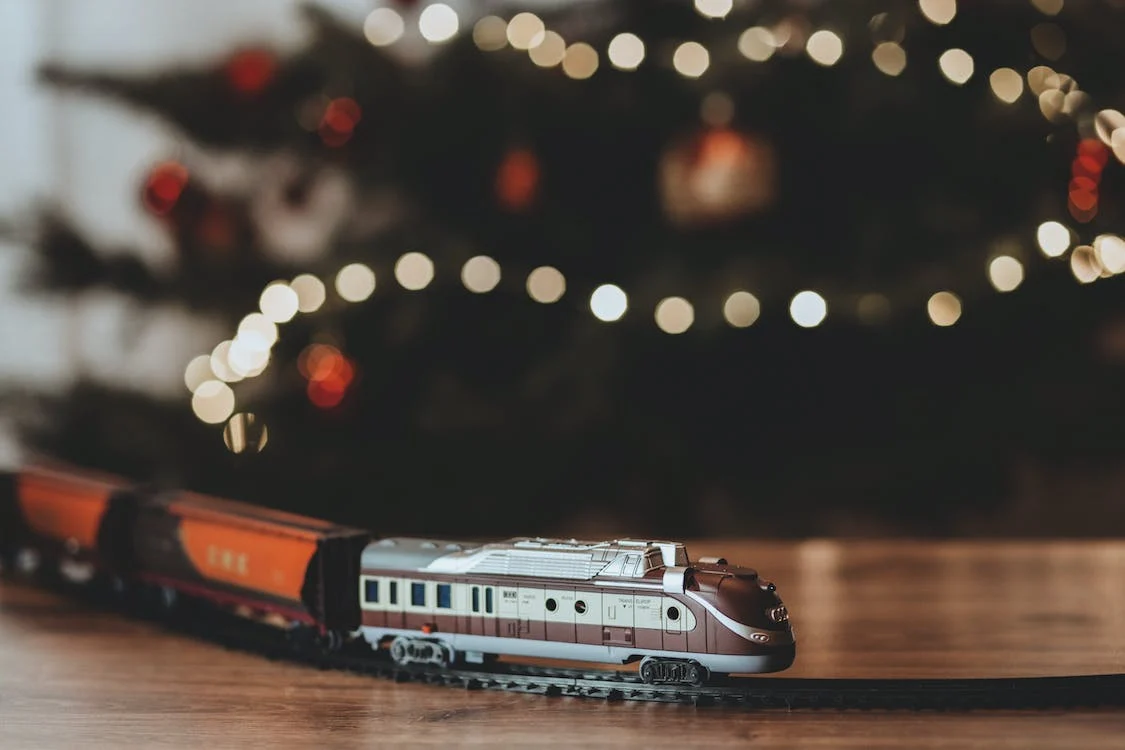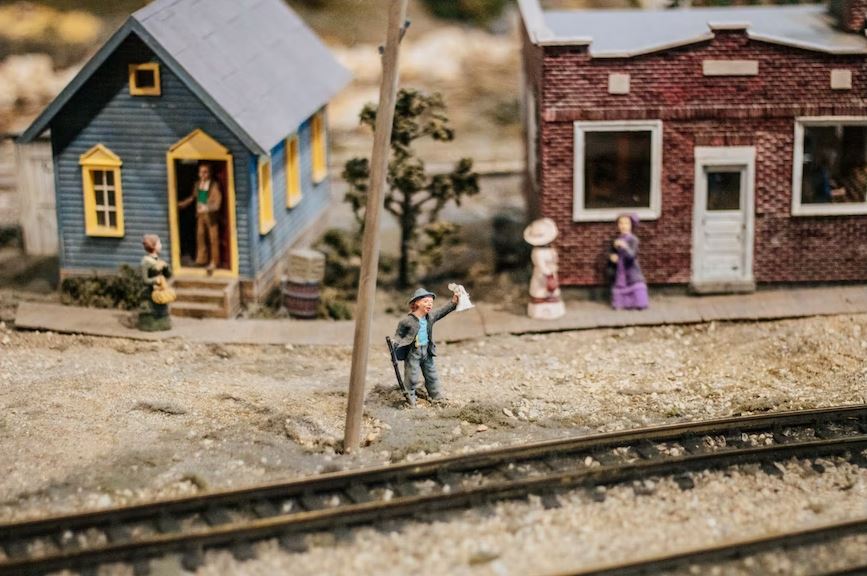Introduction
One of the most crucial decisions in making railways models is selecting an appropriate train gauge. A model train of one gauge is not compatible with that of another. Also, choosing the correct gauge ensures fluid operations of all the components.
Moreover, the scale and the gauge can influence the extent of details that you can add. This affects the hyper-realistic feel of the model. With a larger scale, you have room to add more details to your model.
It should be noted that the gauge should be chosen wisely with intelligent foresight. Many times, it becomes difficult to find the components of a particular gauge, after the constructor has already spent hours on a model.
Always choose a gauge that has a diverse and ever-expanding range of components easily available. This will allow you to add or subtract accessories and other tidbits and give you more freedom to make your rail model more diverse and detailed.
Two gauges are popular among the rail model makers’ fraternity; The N scale and the HO scale. In this blog, we will explain both the gauges for everyone who might be new to the hobby of making train models.
What are the N Scales and HO Scales?
The N Scale and HO Scale are two widely used scales employed by modelers for their projects.
The N Scale lies in the small range of railroad model-making scales. Its size ratio is 1:160 which means 1 foot of a real train is equivalent to 160 feet of the model train. The N scale trains are usually around 3-4 inches in length.
The HO Scale, casually referred to by modelers as the “Goldilocks” scale, lies in the larger spectrum of train model scales. Its ratio is 1:87.1, which translates to 1 foot of a real train equivalent to 87.1 feet of the model train. HO-scale trains usually stretch to about 6-8 inches in length.
The N scale gauge is a useful choice for modeling in limited space and longer trains can be set up on limited layouts. This scale is pocket-friendly and easily available compared to its other counterparts. Plus, N scale models are also easy to carry from place to place.
On the flip side, the handling of N scale models is difficult and the models are often less detailed due to their compactness.
The HO scale allows better detailing and easy handling due to their size which is just about convenient. The elements are not too big and neither too small making it ideal for beginners and experts alike.
However, HO scale models require relatively more space. Besides these two scales, there are also other scales that hobbyists, especially the beginners to the hobby, should know about. To learn more about these scales, check out the Beginner’s Guide to Model Trains.
N Scale vs. HO Scale: Which Gauge is Right for You?
When selecting a scale gauge for your train model, space and the budget are the two most important factors. If you have limited space, the N scale would likely work best for you. If you have to cover a larger expanse, the HO scale would work wonders.
Also, bear in mind the budget and the availability of the accessories for both scales. HO scale products are more expensive and are more easily available than NO scale accessories and components.
Be informed that the level of skill is also a key factor. The HO scale might be a smart pick for those with large hands, poor eyesight, or maybe are less experienced with train model making.
When deciding what scale to opt for, brainstorm thoroughly. Firstly, factor in the expanse of space you have. Next, go through your basic layout and look for the detail you have decided for your model.
Then, research the local and easily accessible market to see what scale is easily available and is not pushing your budget. Also, gauge your expertise with train model making before committing your money and time to it.
Layout Design
N Scale layouts are predominantly made for smaller spaces and the most common dimensions are 4’X8’, 3’X6’, and 2’X4’. These layouts follow a 1:160 ratio of scaling making each element of the model 160 times smaller than that of the real element they represent.
The HO Scale layouts are bigger where each model element is around 87.1 times smaller than what they represent in real life. The usual track radius of the N scale and HO scale layout is 9.75 inches and 18 inches respectively.
HO scales layout can offer a more immersive experience due to the flood of details. They can occupy a large area which might not be easy to recover as they are huge and difficult to move about.
While the N scale layouts might compromise on details due to less playable area, they can still be a good option for when the budget or the space is limited.
Also, more than one layout design can be made as these models are cheaper, allowing for more engagement and experimentation with various terrains and kinds of trains.
Ensure that your layout is pre-planned, paying close attention to adding a reliable track. Detail it with structures and sceneries and enhance it with lighting effects and music. You can even toy around with multiple tracks if you have the budget and expertise.
Track and Accessories
Generally, the primary ingredients can be found easily in both the N scale and the HO scales. Trackside structures like bridges, tunnels, and edifices can be easily found as they are commonly used.
Also, elements that are used to add realism, depth, and detail like decals, signs, foliage, trees, grass, rail joiners, power supplies, etc. can be easily found too. Moreover, since ballast is predominantly used to construct realistic ground covers many manufacturers offer them in both scales.
However, creative elements like turnout switches, control systems, operating accessories, brake wheels and couplers, rolling stock, and lighting can be easily found in HO only.
But that doesn’t mean the accessories that are common to both scales are identical. Apart from the size obviously, the features of HO scale tracks and accessories vary greatly. HO tracks are 16.5 mm wide, whereas the N scale track is merely 9mm.
The geometry of elements is also different with N scale turnouts and switches having a smaller footprint, and the rolling stock of HO being able to snake around tighter curves.
Ensure that you are well versed with not just the space, budget, skill, and details you want but more importantly the functionality of the model. For example, if you are modeling and running a large train, you should go for HO, but if you are aiming at a display of switching operations go for the N scale.
Cost Comparison
Understandably enough, HO scale products are more expensive than N scale products.
N Scale beginner packs can be tagged at around $50 to $150, with locomotives and rolling stock ranging between $20-$100.
In contrast, the HO scale beginner packs can cost between $100-$300 while the accessories start from $30 and go up to $200. And these are only the general prices of average quality products. The bigger the brand the higher the price will climb for both HO and N scale.
Apart from the obvious factors like quality and brand name, the cost is influenced greatly by the details and complexity of the accessories when both scales are considered.
The sturdiness of the material also plays some role. Evidently, since HO scale accessories are more detailed, sturdy, and complex they can cost you more than their N scale counterparts.
In the longer run, N scale models can be costly to maintain due to their feeble constructions and delicateness compared to HO scale models. On the other hand, HO scales due to their size and more room for elements can cost more in the future as the model is upgraded and developed.
Conclusively, the long-term cost of a model can only be determined by the preference and purpose of the model maker.
Conclusion
Selecting between the N scale and the HO scale is a decision based on multiple factors. The two scales vary primarily in size which subsequently influences the purpose, the usage, and the incurring costs.
With HO scales detailing and effects can be explored whereas an N scale allows for making train models when space is limited. When making a decision, work out the space you might have, the detail you want to add, the kind of tracks, and the functionality you want with the model trains.
Try not to breach your budget. For that, always bear in mind the current cost of the project and the cost it will incur when it will be upgraded, and then only make an informed decision about the scale you want to choose.
Most importantly, before jumping into a hasty decision, understand the extent of your skills and proficiency with model making. As a friendly tip, the foremost thing you must do is to understand the mathematics of these scales.
The more you’ll have a handle on the size differences and the scales of elements, the better you will be able to decide the layout and other details for your model.


